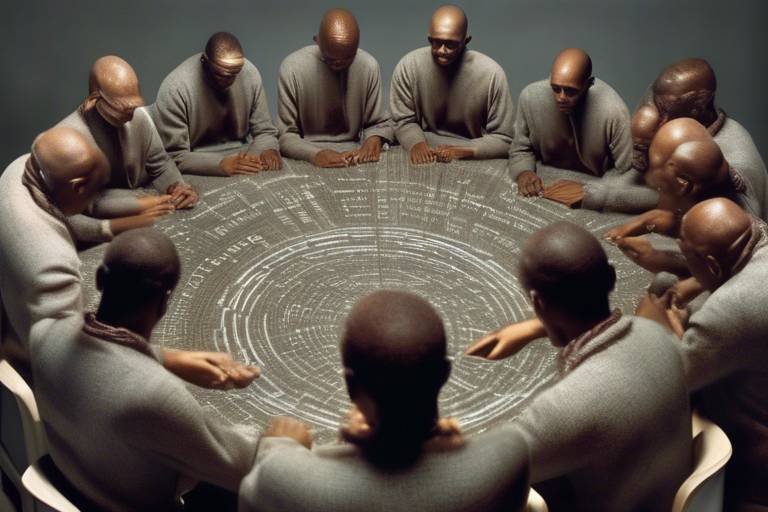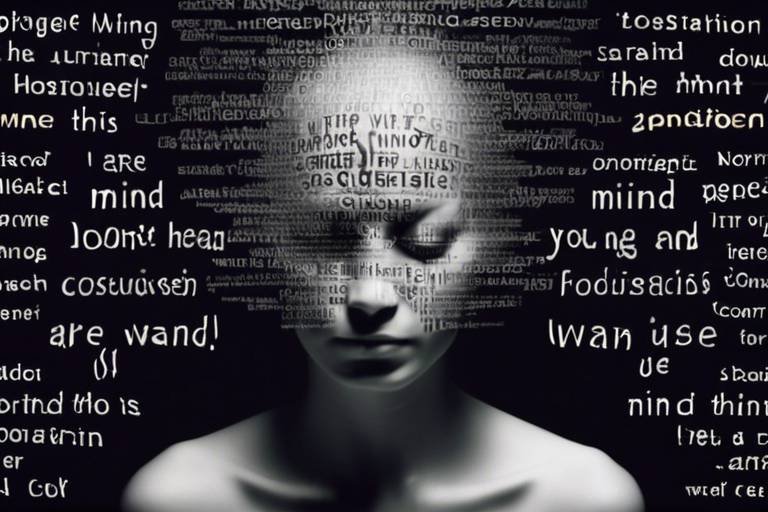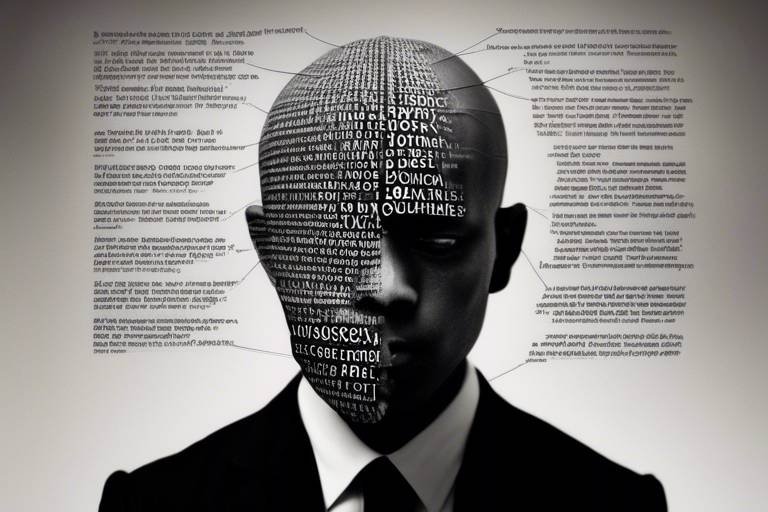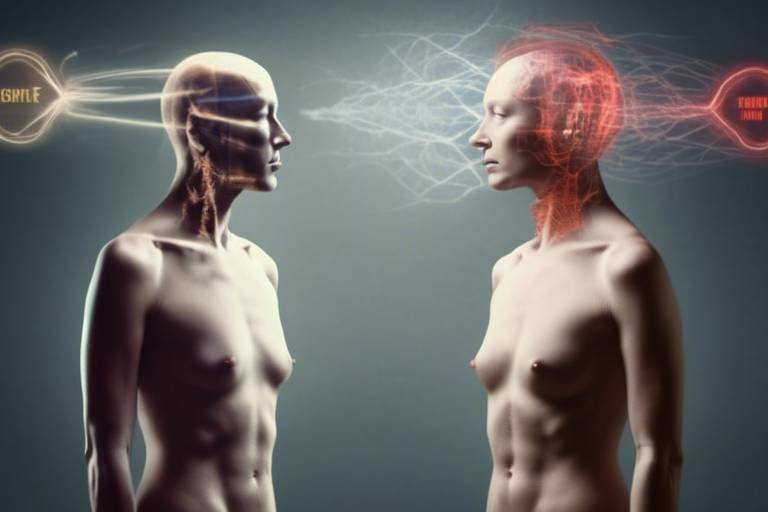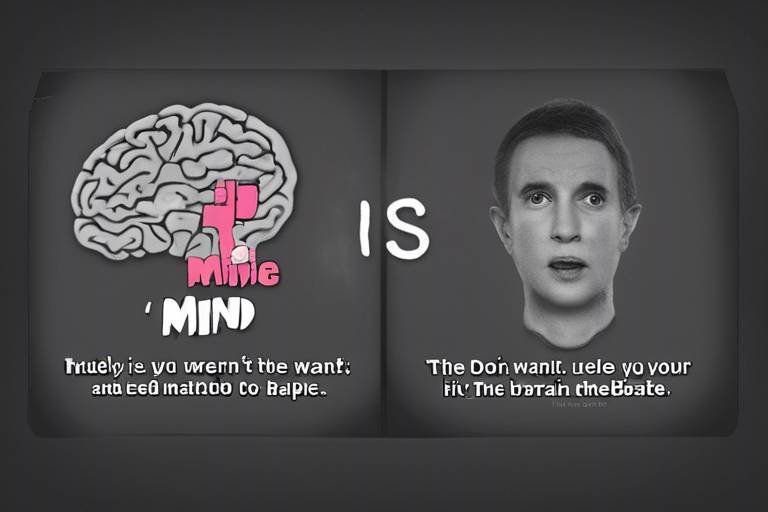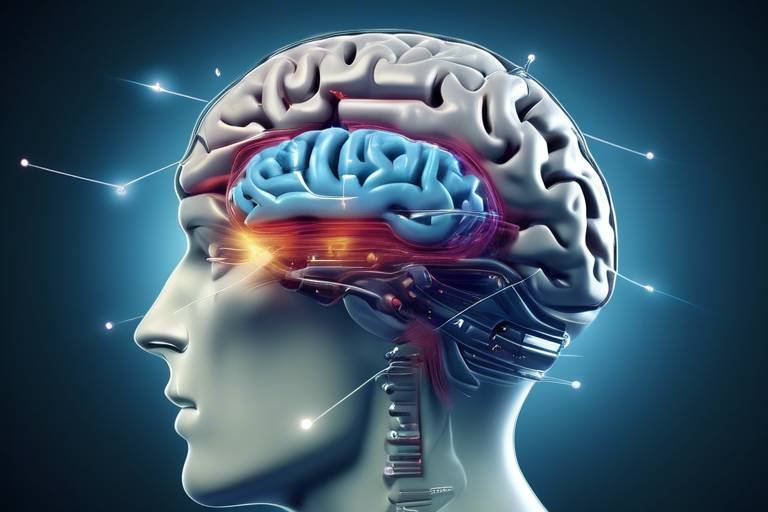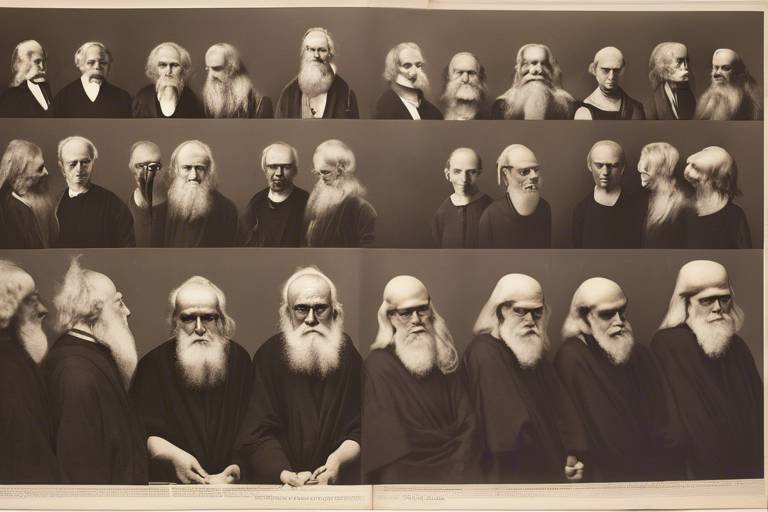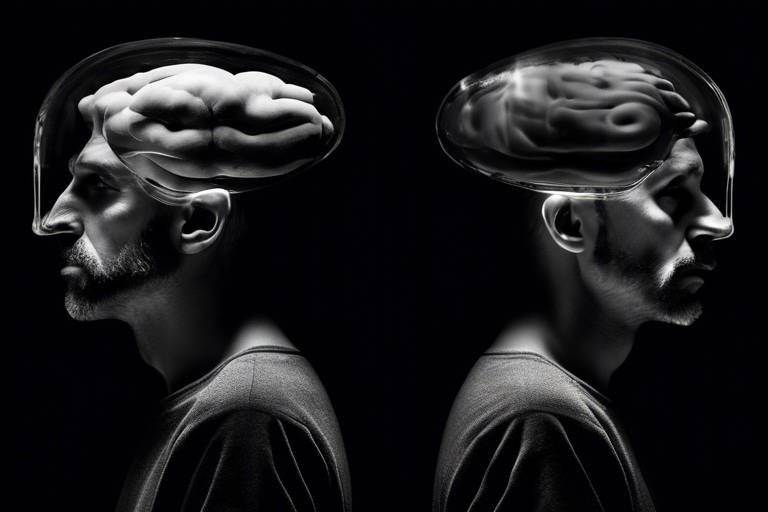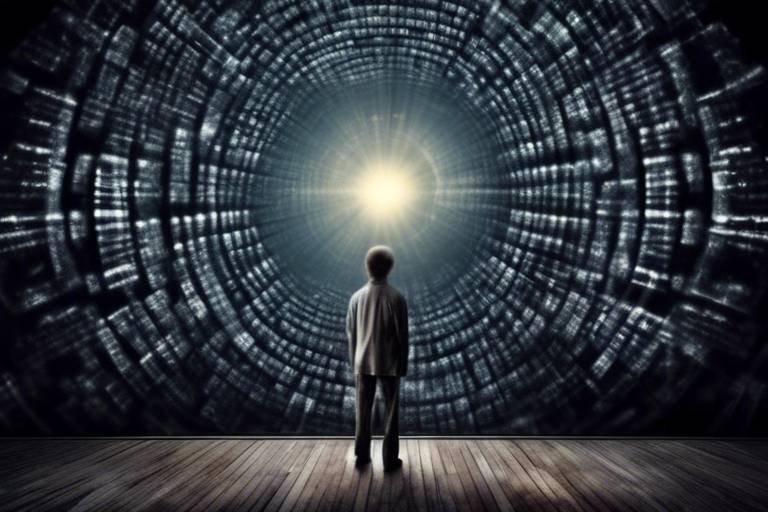Rationalizing The Concept Of Collective Consciousness
The concept of collective consciousness is a fascinating and intricate idea that delves deep into the shared beliefs, values, and attitudes that shape a group or society. Imagine a vast ocean, where each drop of water represents an individual thought or experience. Together, these drops create a powerful current that influences the direction of the entire body of water. This is akin to how collective consciousness operates within human societies, forming a tapestry of interconnected ideas that guide behaviors and interactions. But what does this really mean for us as individuals and as a collective?
At its core, collective consciousness is about the shared awareness that emerges from social interactions and cultural exchanges. It is the invisible thread that binds people together, creating a sense of belonging and identity. Think about how we rally around national holidays, cultural traditions, or even global movements; these moments reveal the underlying currents of collective consciousness that shape our identities and drive societal change. But why should we care about this concept? Understanding collective consciousness can empower us to navigate the complexities of social dynamics and enhance our ability to connect with others.
One of the most compelling aspects of collective consciousness is its ability to adapt and evolve over time. Just as a river carves its path through the landscape, collective consciousness is influenced by historical events, cultural shifts, and technological advancements. For example, the rise of the internet has transformed how we share information and connect with one another, leading to the emergence of new collective identities that transcend geographical boundaries. This has sparked a revolution in how social movements are organized and mobilized, highlighting the relevance of collective consciousness in contemporary society.
As we dive deeper into this topic, we will explore the origins of collective consciousness, its role in shaping societal norms, and its impact on individual identity. From the echoes of historical events to the rapid changes brought about by modern media, we will unravel the threads that weave together the fabric of our shared experiences. Ultimately, understanding collective consciousness not only enriches our comprehension of social dynamics but also invites us to reflect on our place within the larger community. So, are you ready to embark on this journey of exploration and discovery?
Understanding the historical roots of collective consciousness helps us grasp its evolution and significance in shaping human societies, drawing from philosophical, sociological, and psychological perspectives.
Collective consciousness influences social norms, values, and shared beliefs, playing a crucial role in community cohesion and the development of cultural identities.
Collective memory refers to the shared pool of knowledge and experiences that shape group identity, impacting how societies remember their past and envision their future.
Historical events significantly shape collective memory, influencing societal narratives and fostering a sense of unity or division among different groups.
In today's digital age, modern media plays a vital role in shaping collective memory, altering perceptions and influencing the shared experiences of communities.
Psychological theories provide insights into how collective consciousness operates within individuals, affecting their thoughts, emotions, and behaviors in relation to the group.
Social movements often arise from a shared collective consciousness, mobilizing individuals around common goals and fostering a sense of urgency for change within society.
Shared goals within a collective consciousness can unite diverse individuals, empowering them to work together toward societal transformation and collective action.
Analyzing historical and contemporary case studies reveals how collective consciousness has driven significant social movements, highlighting the importance of unity in effecting change.
As society evolves, the concept of collective consciousness will continue to transform, influenced by technological advancements, globalization, and shifting cultural dynamics, prompting new discussions on its relevance and implications.
- What is collective consciousness? - Collective consciousness refers to the set of shared beliefs, ideas, and moral attitudes that operate as a unifying force within society.
- How does collective consciousness impact individual behavior? - It shapes how individuals think, feel, and act in relation to their community, often influencing personal identity and social interactions.
- Can collective consciousness change over time? - Yes, it evolves with cultural shifts, technological changes, and historical events, reflecting the dynamic nature of human societies.
- What role does media play in collective consciousness? - Media plays a crucial role in shaping collective memory and perceptions, influencing how communities share experiences and narratives.

The Origins of Collective Consciousness
Understanding the historical roots of collective consciousness is essential for grasping its evolution and significance in shaping human societies. This concept isn't just a modern invention; it has deep philosophical, sociological, and psychological foundations that stretch back through the ages. Think of collective consciousness as a vast, interconnected web of thoughts, beliefs, and experiences that bind individuals together, creating a shared identity. It's like a cultural tapestry, woven from the threads of history, tradition, and shared experiences.
The philosophical underpinnings of collective consciousness can be traced back to thinkers like Émile Durkheim, who argued that the collective beliefs and values of a society shape individual behaviors. He posited that individuals are not merely isolated entities; rather, they are profoundly influenced by the social context in which they exist. This idea can be likened to a river; while each drop of water is distinct, together they form a powerful current that shapes the landscape.
From a sociological perspective, collective consciousness plays a pivotal role in establishing social norms and values. These shared beliefs act as a glue, holding communities together and providing a sense of belonging. For instance, consider how traditions and rituals create a sense of unity among members of a community. They serve as collective markers of identity, helping individuals navigate their social world. This is particularly evident in various cultural practices, where the collective memory of a group is celebrated through festivals, ceremonies, and communal gatherings.
In addition to philosophy and sociology, psychology also offers insights into the origins of collective consciousness. Theories such as Carl Jung's concept of the collective unconscious suggest that there exists a shared reservoir of experiences and archetypes that influence human behavior across cultures. Jung believed that these shared elements shape not just individual experiences but also the broader collective consciousness of societies. Imagine it as a shared dream, where elements of myth and symbolism resonate across different cultures, creating a universal language of human experience.
To further illustrate the multifaceted nature of collective consciousness, we can examine its impact through various historical periods. For example, during the Enlightenment, the rise of reason and individualism began to challenge traditional collective beliefs, leading to a shift in how societies viewed knowledge and authority. Conversely, in times of crisis, such as during wars or pandemics, collective consciousness often strengthens, as communities rally together to support one another, highlighting the resilience inherent in shared human experience.
In conclusion, the origins of collective consciousness are deeply rooted in our history, shaped by philosophical, sociological, and psychological influences. Understanding these origins not only helps us appreciate the complexity of human societies but also sheds light on how we can navigate our present and future as interconnected beings. As we continue to explore this concept, it's clear that collective consciousness remains a vital force that influences our thoughts, actions, and shared identities.

The Role of Collective Consciousness in Society
Collective consciousness is more than just a buzzword; it’s the invisible thread that weaves individuals into a cohesive social fabric. Imagine a vast tapestry made up of countless threads, each representing a unique person, their experiences, and their beliefs. When we talk about collective consciousness, we’re diving into how these threads come together to form the larger picture of society. This concept plays a crucial role in shaping our social norms, values, and shared beliefs, acting as a guiding force that influences how we interact with one another and how we perceive the world around us.
One of the most significant impacts of collective consciousness is its ability to foster community cohesion. When people share common beliefs and values, it creates a sense of belonging that can lead to stronger relationships and a more unified society. Think of it like a sports team: when everyone is on the same page, working towards a common goal, they function better together. This sense of unity can be seen in various cultural identities, where shared traditions and histories bind individuals together, creating a rich community tapestry that celebrates diversity while promoting harmony.
However, collective consciousness is not static; it evolves with society. As new ideas and technologies emerge, they can shift the collective mindset, leading to changes in social norms. For example, the rise of social media has transformed how we communicate and interact, allowing for a broader range of voices to contribute to the collective narrative. This can be both empowering and challenging, as it introduces new perspectives while also complicating the traditional narratives that have long defined societies.
Collective consciousness also plays a vital role in shaping our responses to social issues. When a community rallies around a cause, whether it’s environmental protection or social justice, it’s often fueled by a shared understanding of the problem at hand. This sense of urgency can mobilize individuals, encouraging them to take action and work together towards a common goal. The collective consciousness acts as a catalyst for change, transforming individual concerns into a unified movement that can lead to significant societal shifts.
To illustrate this further, consider the following table that summarizes the key aspects of how collective consciousness influences society:
| Aspect | Description |
|---|---|
| Social Norms | Shared beliefs that dictate acceptable behavior within a group. |
| Cultural Identity | The sense of belonging to a particular cultural group, shaped by shared experiences. |
| Community Cohesion | The bonds that unite individuals, fostering cooperation and support. |
| Social Movements | Collective action driven by shared goals and values, often leading to societal change. |
In conclusion, the role of collective consciousness in society is profound and multifaceted. It shapes our identities, influences our actions, and creates the frameworks within which we operate. As we navigate the complexities of modern life, understanding this concept can help us appreciate the interconnectedness of our experiences and the power of shared beliefs in driving societal change. So, the next time you find yourself part of a group, whether in person or online, remember that you’re contributing to a larger narrative—a collective consciousness that can inspire transformation and unity in an ever-changing world.
- What is collective consciousness? - It refers to the set of shared beliefs, ideas, and moral attitudes that operate as a unifying force within society.
- How does collective consciousness affect social movements? - It mobilizes individuals around common goals, creating a sense of urgency and purpose for change.
- Can collective consciousness change over time? - Yes, it evolves with societal changes, influenced by new ideas, technologies, and cultural shifts.

Collective Memory and Identity
Collective memory serves as the glue that binds individuals together, creating a shared narrative that shapes group identity. It's fascinating to think about how our memories are not just personal; they are interwoven with the experiences and recollections of others. This shared pool of knowledge influences how societies perceive their past and envision their future. For instance, consider how national holidays or memorials resonate within a community. They are not merely dates on a calendar; they are symbolic reminders of collective experiences that strengthen a sense of belonging.
Moreover, collective memory impacts our social dynamics in profound ways. It can foster unity, as individuals rally around a shared history, or it can create division, especially when different groups remember events in contrasting ways. Think of the various interpretations of historical events; they can lead to a sense of cultural identity that is both rich and complex. For example, the way a nation remembers its independence can instill pride and a sense of purpose among its citizens, while the same event might be viewed differently by those who were marginalized during that time.
In contemporary society, the influence of modern media cannot be understated. With the rise of social media platforms, collective memory is being reshaped at an unprecedented pace. Information spreads rapidly, and with it, the narratives we choose to embrace. This digital age allows for diverse voices to contribute to the collective memory, but it also raises questions about authenticity and accuracy. How do we discern which memories are valid? How do we ensure that the narratives we uphold are inclusive and representative of all experiences? These are critical questions that challenge our understanding of identity and memory in our increasingly interconnected world.
To illustrate this further, let's consider a table that outlines some key aspects of collective memory and its role in shaping identity:
| Aspect | Description |
|---|---|
| Shared Experiences | Events that are collectively remembered, such as wars, celebrations, and tragedies. |
| Cultural Narratives | Stories passed down through generations that shape a group's identity. |
| Media Influence | The role of news, social media, and entertainment in shaping perceptions of collective memory. |
| Inclusivity | The need for diverse perspectives in the collective memory to ensure representation. |
In conclusion, collective memory is not just a passive recollection of the past; it is a dynamic force that shapes our identities and influences our social fabric. As we navigate through the complexities of modern life, it becomes essential to acknowledge the power of our shared memories. They have the potential to unite us, but they can also challenge us to confront uncomfortable truths about our histories. By understanding and embracing collective memory, we can foster a more inclusive and cohesive society that honors all voices and experiences.

The Impact of Historical Events
Historical events serve as pivotal moments that can profoundly shape the collective consciousness of a society. These events, whether they are wars, revolutions, or significant social movements, create a shared narrative that influences how groups perceive their identity and place in the world. For instance, the aftermath of World War II not only redefined national boundaries but also fostered a collective memory that emphasized resilience and unity among nations. This shared experience can lead to a stronger sense of belonging and identity within communities, as individuals come together to reflect on their past.
The impact of these events can be seen in various contexts, from the formation of national identities to the establishment of social norms. Consider the civil rights movement in the United States; it not only aimed to dismantle systemic racism but also forged a collective consciousness that emphasized equality and justice. This movement galvanized diverse groups and created a shared understanding of the struggles faced by marginalized communities. As a result, the collective memory surrounding this period continues to influence contemporary discussions about race and equality.
Furthermore, historical events often serve as a catalyst for change, prompting societies to evaluate their values and beliefs. For example, the fall of the Berlin Wall in 1989 was not just a physical barrier coming down; it symbolized the collapse of oppressive regimes and the rise of democratic ideals. This moment in history has been etched into the collective consciousness of many, reminding us of the power of unity and the human spirit’s resilience against tyranny.
Additionally, the way these events are remembered and commemorated can vary significantly across cultures. Some societies may choose to celebrate their historical milestones, while others might engage in a more reflective or critical analysis of their past. This divergence can lead to differing narratives within a collective consciousness, highlighting the complexities of shared memory.
In the age of information, the impact of historical events is further amplified by modern media. The way events are portrayed in films, documentaries, and social media can shape perceptions and influence collective memory. For instance, the portrayal of historical events in popular culture can either reinforce existing narratives or challenge them, leading to a dynamic evolution of collective consciousness.
To summarize, the impact of historical events on collective consciousness is multifaceted, influencing identity, values, and societal norms. As we navigate the complexities of our shared history, it’s essential to recognize how these events continue to resonate within our communities, shaping our understanding of who we are and where we are headed.
- What is collective consciousness?
Collective consciousness refers to the set of shared beliefs, ideas, and moral attitudes that operate as a unifying force within society.
- How do historical events shape collective consciousness?
Historical events create shared narratives that influence group identity, societal values, and the collective memory of communities.
- Can collective consciousness change over time?
Yes, collective consciousness is dynamic and can evolve due to new experiences, cultural shifts, and the influence of modern media.
- Why is understanding collective consciousness important?
Understanding collective consciousness helps us comprehend how groups function, how identities are formed, and how societal change can be mobilized.

Modern Media's Influence
In today's hyper-connected world, modern media has become a powerful force that shapes collective consciousness in ways we are only beginning to understand. Think about it: how often do you scroll through social media and find yourself influenced by trending topics, viral videos, or even memes? These platforms act as a digital tapestry, weaving together individual experiences into a shared narrative that can transcend geographical boundaries. The immediacy of information dissemination means that events happening thousands of miles away can evoke emotional responses in people who have never set foot in those places.
Moreover, modern media has a knack for framing narratives. The way a story is told—be it through news outlets, social media, or entertainment—can significantly affect how we perceive reality. For instance, consider how different news channels cover the same event. Each channel brings its own bias, shaping public opinion and, ultimately, collective consciousness. This phenomenon raises crucial questions: Are we merely passive consumers of information, or do we actively shape the narratives that define our communities?
In addition, the role of visual media cannot be understated. Images and videos have a profound impact on our emotions and beliefs. A single photograph can encapsulate a moment in time, igniting outrage or empathy across vast audiences. This is particularly evident in movements like Black Lives Matter, where visual documentation of events has galvanized public support and sparked widespread discussion. As these images circulate, they contribute to a collective memory that informs societal values and norms.
Another layer to this complex web is the algorithmic influence of social media platforms. Algorithms curate content based on user preferences, creating echo chambers that reinforce existing beliefs. This can lead to polarization, where individuals are exposed only to ideas that align with their views, further solidifying a collective consciousness that may not reflect a balanced perspective. Thus, while modern media has the potential to unite, it can also divide, prompting us to reflect on the kind of collective consciousness we are fostering.
To illustrate the impact of modern media on collective consciousness, consider the following table that outlines key aspects:
| Aspect | Impact on Collective Consciousness |
|---|---|
| Information Dissemination | Rapid spread of news and events, shaping public perception. |
| Narrative Framing | Influences how events are interpreted and understood. |
| Visual Media | Evokes emotional responses and shapes collective memory. |
| Algorithmic Curation | Creates echo chambers, reinforcing existing beliefs. |
In summary, modern media is not just a tool for communication; it is a catalyst for shaping collective consciousness. As we navigate this digital landscape, it is vital to remain aware of how these influences can mold our perceptions, challenge our beliefs, and ultimately guide the evolution of our shared identities.

Psychological Perspectives on Collective Consciousness
The concept of collective consciousness is not just a social phenomenon; it also has profound psychological implications. At its core, collective consciousness represents the shared beliefs, ideas, and moral attitudes that operate as a unifying force within a group. This shared mental framework influences how individuals perceive their world, interact with others, and respond to societal norms. But how does this play out in our daily lives? Let's dive deeper into the psychological perspectives that shed light on this intriguing concept.
From a psychological standpoint, collective consciousness can be viewed through the lens of social identity theory. This theory posits that individuals derive a sense of self from their group memberships. When people identify strongly with a group, their thoughts, feelings, and behaviors align more closely with the group's norms and values. For instance, think about sports fans: their passion for a team goes beyond mere interest; it becomes a part of their identity. This phenomenon illustrates how collective consciousness can enhance group cohesion while simultaneously creating an "us versus them" mentality.
Moreover, the psychological concept of conformity plays a significant role in shaping collective consciousness. Individuals often adjust their behaviors and beliefs to align with those of the group, especially in situations where they feel uncertain. This can lead to a powerful reinforcement of shared beliefs, as people seek acceptance and validation from their peers. However, it also raises critical questions: Are we truly expressing our authentic selves, or are we merely echoing the sentiments of the crowd? This tension between individuality and conformity is a fascinating aspect of human psychology.
Another important psychological perspective is the idea of collective memory. This refers to how groups remember their past and share narratives that shape their identity. Collective memory is not just a passive recollection of events; it actively influences how groups perceive their present and future. For example, a community that collectively remembers a historical injustice may feel a strong sense of solidarity and urgency to advocate for change. This shared memory can serve as a powerful motivator for social action, illustrating how psychological factors intertwine with collective consciousness.
To illustrate these concepts further, consider the following table that summarizes the key psychological perspectives on collective consciousness:
| Perspective | Description |
|---|---|
| Social Identity Theory | Individuals derive identity from group memberships, influencing behavior and attitudes. |
| Conformity | Adjustment of beliefs and behaviors to align with group norms, often driven by a need for acceptance. |
| Collective Memory | Shared narratives and recollections that shape group identity and influence social action. |
In today's rapidly changing world, the dynamics of collective consciousness are further complicated by factors such as technology and globalization. The rise of social media has created new platforms for collective expression, enabling individuals to connect and share their experiences across vast distances. This digital landscape allows for the rapid dissemination of ideas, which can either strengthen collective consciousness or lead to fragmentation as diverse voices compete for attention.
As we navigate these complexities, it becomes essential to understand how psychological factors influence our collective consciousness. By recognizing the interplay between individual psychology and group dynamics, we can foster a more inclusive and empathetic society. So, the next time you find yourself swept up in a group sentiment, take a moment to reflect: are you contributing to the collective consciousness, or are you merely a spectator in someone else's narrative?
- What is collective consciousness? Collective consciousness refers to the set of shared beliefs, ideas, and moral attitudes that operate as a unifying force within a group.
- How does social identity theory relate to collective consciousness? Social identity theory suggests that individuals derive a sense of self from their group memberships, which influences their thoughts and behaviors.
- What role does collective memory play? Collective memory shapes how groups remember their past and influences their identity and social actions.
- How has technology impacted collective consciousness? Technology, especially social media, has enabled new forms of collective expression and communication, influencing how groups form and interact.

Collective Consciousness and Social Movements
Social movements are like the heartbeat of a society, pulsating with the shared emotions, beliefs, and aspirations of its people. When we talk about collective consciousness, we're diving into a powerful force that can ignite change and inspire action. Imagine a group of individuals, each with their unique experiences and perspectives, coming together to form a unified voice. This is the essence of collective consciousness, and it often serves as the foundation for social movements that aim to challenge the status quo.
At the core of many successful social movements is a shared sense of purpose. This shared purpose acts as a glue, binding individuals together, enabling them to transcend personal differences and work toward a common goal. For instance, movements advocating for civil rights, environmental protection, or social justice have all harnessed the energy of collective consciousness to mobilize support, raise awareness, and create meaningful change. When people feel connected to a larger cause, they are more likely to take action, whether it be through protests, petitions, or grassroots organizing.
Consider the impact of the Black Lives Matter movement, which emerged from a collective consciousness around the urgent need for racial justice. This movement has not only highlighted systemic issues but has also galvanized individuals from diverse backgrounds to unite under a common banner. Through social media and digital platforms, the message has spread like wildfire, demonstrating how collective consciousness can transcend geographical boundaries and foster global solidarity.
Moreover, collective consciousness is not just about the present; it is also deeply rooted in historical narratives. The stories we tell about our past shape our collective identity and influence our future actions. For instance, movements often draw on historical injustices to rally support and emphasize the need for change. This connection to history creates a sense of urgency and legitimacy, allowing individuals to see their fight as part of a larger continuum of struggle.
However, it's crucial to recognize that collective consciousness can also have a dual nature. While it can inspire unity and action, it can also lead to polarization and division. When groups become too insular, they risk alienating others and fostering an "us versus them" mentality. This is why it's vital for social movements to maintain an inclusive approach, ensuring that diverse voices and perspectives are heard and valued.
In conclusion, the interplay between collective consciousness and social movements is a dynamic and evolving relationship. As society faces new challenges, the ability to harness collective consciousness will be essential in driving social change. By fostering a sense of unity and shared purpose, individuals can come together to create a brighter future, one where their collective voices resonate in harmony.
- What is collective consciousness? Collective consciousness refers to the set of shared beliefs, ideas, and moral attitudes that operate as a unifying force within society.
- How does collective consciousness influence social movements? It provides a sense of unity and shared purpose, empowering individuals to come together and advocate for common goals.
- Can collective consciousness lead to division? Yes, while it can unite, it can also create an "us versus them" mentality if groups become too insular.
- What role does history play in collective consciousness? Historical narratives shape our collective identity and influence how social movements mobilize support for change.

The Power of Shared Goals
When we talk about shared goals within a collective consciousness, we’re diving into a powerful concept that transcends individual aspirations. Imagine a group of people, each with their own dreams and desires, coming together to pursue a common objective. This unity is not just about the end goal; it’s about the journey they take together. The magic happens when individuals realize that their personal ambitions can be amplified when aligned with the aspirations of others. It’s like a symphony, where each musician plays a different instrument, yet together they create a harmonious melody that resonates with everyone.
Shared goals act as a catalyst for collaboration and cooperation. They create a sense of purpose that drives individuals to contribute their unique skills and talents toward a larger cause. Think about social movements like civil rights or environmental activism—these are prime examples of how a collective consciousness can mobilize people to advocate for change. When individuals recognize that their efforts contribute to a shared vision, it fosters a sense of belonging and accountability. This is where the real power lies.
Furthermore, shared goals can significantly enhance motivation. When people work together towards a common aim, they often experience a boost in morale. The energy generated from collective enthusiasm can be contagious, inspiring others to join the cause. For instance, during community clean-up events, participants not only feel good about contributing to a cleaner environment but also enjoy the camaraderie of working alongside others. It’s this shared experience that solidifies their commitment and strengthens the bond among participants.
Here’s a quick breakdown of how shared goals can transform individual efforts into collective achievements:
- Increased Motivation: Individuals feel inspired and energized by the group's collective drive.
- Enhanced Collaboration: Diverse skills and perspectives come together, leading to innovative solutions.
- Stronger Community Bonds: Working towards a common goal fosters relationships and trust among participants.
- Greater Impact: Collective efforts often yield more significant results than individual actions.
In conclusion, the power of shared goals within a collective consciousness cannot be underestimated. It transforms ordinary individuals into a formidable force capable of enacting change. By harnessing this collective energy, we can address pressing societal issues, promote social justice, and create a more inclusive world. The next time you find yourself part of a group with a shared objective, remember that you’re not just working towards a goal; you’re part of a larger movement that has the potential to change the world.
Q1: What is collective consciousness?
A1: Collective consciousness refers to the set of shared beliefs, ideas, and moral attitudes that operate as a unifying force within society.
Q2: How do shared goals impact social movements?
A2: Shared goals unite individuals around common objectives, fostering collaboration and driving collective action toward social change.
Q3: Can individual goals align with shared goals?
A3: Absolutely! When individuals align their personal aspirations with shared goals, they can amplify their impact and contribute to a greater cause.
Q4: Why is motivation important in collective efforts?
A4: Motivation fuels engagement and persistence. In collective efforts, shared enthusiasm can inspire individuals to stay committed and work harder toward achieving the common goal.

Case Studies in Collective Action
When we dive into the fascinating realm of collective action, it's like peeling back the layers of an onion—each layer revealing a richer understanding of how groups unite for a common cause. Let's take a closer look at some pivotal case studies that illustrate the power of collective consciousness in driving social change.
One of the most notable examples is the Civil Rights Movement in the United States during the 1950s and 1960s. This movement was not just a series of protests; it was a profound demonstration of how collective consciousness can galvanize a community. Leaders like Martin Luther King Jr. harnessed the shared experiences and frustrations of African Americans to create a unified front against systemic racism. The power of shared goals—such as equality and justice—mobilized thousands, leading to landmark legislation like the Civil Rights Act of 1964.
Another compelling case study is the Women’s Suffrage Movement, which spanned several decades and crossed international borders. Women from various backgrounds came together to advocate for their right to vote, fueled by a collective consciousness that recognized the injustice of disenfranchisement. This movement not only united women but also challenged societal norms, ultimately leading to significant changes in legislation across the globe. The solidarity displayed in rallies and protests became a powerful symbol of their shared struggle.
In more recent times, the Arab Spring serves as a poignant example of collective action fueled by social media. In 2010, citizens across the Arab world began to rise up against oppressive regimes, driven by a shared desire for freedom and democracy. Social media platforms became the megaphones for their collective consciousness, allowing individuals to share their experiences, organize protests, and inspire others. This illustrates how modern technology can amplify collective action, making it easier for diverse groups to unite and advocate for change.
To better understand the dynamics of these movements, we can analyze their outcomes through a comparative lens. The following table highlights key aspects of each case study:
| Case Study | Key Goals | Outcome | Collective Consciousness Element |
|---|---|---|---|
| Civil Rights Movement | Equality, Justice | Legislation like Civil Rights Act | Shared experiences of oppression |
| Women’s Suffrage Movement | Voting Rights | Global voting rights for women | Collective struggle against disenfranchisement |
| Arab Spring | Freedom, Democracy | Toppling of several regimes | Unified desire for change through social media |
These case studies reveal that collective consciousness is not merely a theoretical concept; it is a living, breathing force that shapes our societies. The stories of these movements remind us that when individuals come together with a shared purpose, they can challenge the status quo and effect profound change. Whether through peaceful protests, social media campaigns, or grassroots organizing, the essence of collective action lies in the unity of purpose and the strength of community.
- What is collective consciousness? Collective consciousness refers to the set of shared beliefs, ideas, and moral attitudes that operate as a unifying force within society.
- How does collective consciousness influence social movements? It provides the foundation for shared goals and values, motivating individuals to unite and take action for change.
- Can modern technology impact collective consciousness? Absolutely! Social media and digital platforms can amplify voices and facilitate the organization of collective action.
- What are some examples of collective action? Examples include the Civil Rights Movement, Women’s Suffrage, and the Arab Spring, all of which demonstrate the power of unity in effecting change.

The Future of Collective Consciousness
The future of collective consciousness is a fascinating landscape, one that is continuously evolving with the relentless pace of change in our world. As we venture further into the 21st century, the interplay between technology, globalization, and shifting cultural dynamics will undoubtedly reshape how we experience our shared consciousness. Imagine a world where our thoughts, beliefs, and values are not only influenced by our immediate surroundings but also by a vast digital network that connects us all. This interconnectedness could either enhance our understanding of each other or create new divisions. What do you think? Will we become more unified, or will the digital age fragment our collective identity?
One of the most profound influences on the future of collective consciousness will be technology. With the rise of social media and instant communication, the way we share ideas and experiences has transformed dramatically. We now have the ability to connect with individuals across the globe in mere seconds. This can lead to a more profound understanding of different cultures and perspectives, fostering a sense of global community. However, it can also amplify echo chambers, where individuals only engage with ideas that reinforce their existing beliefs. The challenge lies in navigating this duality and ensuring that technology serves as a bridge rather than a barrier.
Moreover, the impact of globalization cannot be overstated. As cultures intermingle like colors on a painter's palette, we are witnessing the emergence of a hybrid collective consciousness. This fusion can create a rich tapestry of shared values and experiences, but it can also spark tensions as traditional identities clash with new global norms. As we move forward, it is crucial for societies to engage in open dialogues about identity and belonging, fostering an environment where diverse perspectives can coexist and thrive.
In addition, the role of education will be pivotal in shaping the future of collective consciousness. By promoting critical thinking and empathy in educational systems, we can equip future generations with the tools needed to navigate this complex landscape. Imagine classrooms where students learn not just about their own culture but also about the histories and experiences of others. This could cultivate a generation that values diversity and understands the importance of collective memory in shaping our shared future.
To sum up, the future of collective consciousness is a tapestry woven from the threads of technology, globalization, and education. It presents both challenges and opportunities. As we continue to evolve, we must remain vigilant and proactive in shaping our collective identity. Here are a few key points to consider:
- Technology: A double-edged sword that can connect or divide.
- Globalization: A melting pot of cultures that can enrich or challenge traditional values.
- Education: The foundation for fostering understanding and empathy among diverse groups.
Ultimately, the trajectory we take will depend on our collective choices and actions. Are we ready to embrace this future together, or will we let it slip through our fingers? The power to shape our collective consciousness lies within us all.
Q1: What is collective consciousness?
A1: Collective consciousness refers to the shared beliefs, values, and attitudes that shape a group’s identity and social norms.
Q2: How does technology influence collective consciousness?
A2: Technology connects people globally, allowing for the rapid exchange of ideas, which can both enhance understanding and create echo chambers.
Q3: What role does education play in shaping collective consciousness?
A3: Education promotes critical thinking and empathy, helping individuals understand and appreciate diverse perspectives, which is essential for a cohesive collective identity.
Q4: Can collective consciousness change over time?
A4: Yes, collective consciousness evolves as societies change, influenced by historical events, cultural shifts, and technological advancements.
Frequently Asked Questions
- What is collective consciousness?
Collective consciousness refers to the set of shared beliefs, ideas, and moral attitudes that operate as a unifying force within society. It's like the glue that holds communities together, influencing how people think and behave in relation to one another.
- How does collective consciousness affect social movements?
Collective consciousness plays a crucial role in social movements by uniting individuals around common goals. When people share a sense of purpose and urgency, they're more likely to mobilize for change, creating a powerful force for societal transformation.
- Can collective consciousness change over time?
Absolutely! Collective consciousness is not static; it evolves with societal changes, technological advancements, and cultural shifts. As new ideas emerge and old ones fade, the shared beliefs and values of a society can transform significantly.
- What role does media play in shaping collective consciousness?
Modern media is a major player in shaping collective consciousness. It influences how communities perceive events, share experiences, and remember their past. In today’s digital age, the rapid spread of information can alter societal narratives almost instantaneously.
- How does collective memory relate to identity?
Collective memory refers to the shared knowledge and experiences that shape a group's identity. It influences how communities remember their history and envision their future, reinforcing a sense of belonging and continuity among members.
- Are there psychological aspects to collective consciousness?
Yes! Psychological theories suggest that collective consciousness affects individual thoughts, emotions, and behaviors. When people identify with a group, their sense of self can be intertwined with the group's beliefs and values, impacting their actions and decisions.
- What historical events have shaped collective consciousness?
Many historical events, such as wars, revolutions, and social movements, have significantly shaped collective consciousness. These events often create shared narratives that foster unity or division among different groups, influencing how societies perceive themselves and each other.
- How does globalization impact collective consciousness?
Globalization has a profound impact on collective consciousness by facilitating the exchange of ideas and cultural values across borders. This interconnectedness can lead to a blending of identities and beliefs, creating new forms of collective consciousness that transcend local boundaries.

